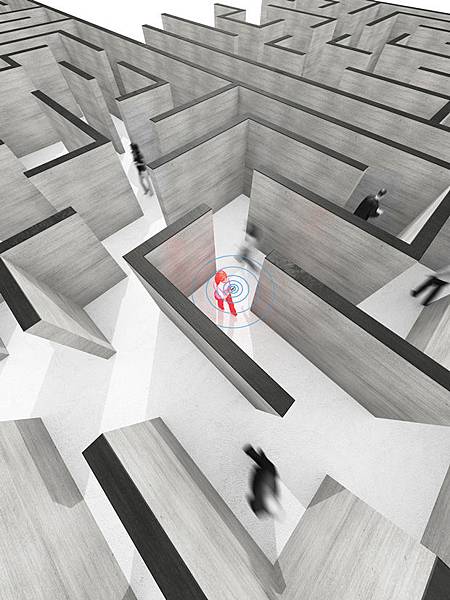
Today you can easily find your way to, say, the nearest Starbucks in a strange city, thanks to a cascade of events that began a little more than 30 years ago, when a Soviet Sukhoi interceptor flying high over the Sea of Japan fired off two heat-seeking missiles. The long-term result: You now have no trouble locating a cappuccino.
Of course, you’re not finding that coffee by the heat it gives off. You are most likely guided to it in missile-like fashion by the GPS receiver in your smartphone or on your dashboard. That ubiquitous piece of consumer technology works—indeed exists—only because the U.S. Department of Defense allowed civilian use of its satellite-based positioning system. That wasn’t the original plan. The Global Positioning System was supposed to be exclusively for soldiers, sailors, and airmen, until President Ronald Reagan ordered a sudden change in policy in response to the deaths of 269 people aboard a Korean airliner that veered into Soviet territory on 1 September 1983. Believing it to be a military aircraft on a spying mission, Soviet air defense forces shot it down.
The Department of Defense dutifully carried out Reagan’s instructions to make GPS signals available for civilian uses, but it hedged at first, addingrandom timing errors to the satellite signals accessible to nonmilitary GPS units so they could determine locations to no better than 100 meters. Then in 2000, after President Bill Clinton ordered this purposeful degradation to be stopped, the error circle shrank to 10 meters or so. All of a sudden, GPS became extremely valuable for vehicle and even pedestrian navigation.
Those shifts in U.S. policy, along with the plummeting cost of GPS chip sets and the proliferation of smartphones, ended up putting formidable satellite-navigation capabilities in almost everyone’s pocket. The rub is that radio signals coming from distant satellites can’t help where the view of the sky is obstructed, which makes navigating in narrow canyons, urban or otherwise, tough going. And these high-frequency signals bounce around so much when they hit metal that getting a good GPS fix indoors usually proves impossible.
It’s a huge problem, one that radio engineers are keen to solve. They’ve been pursuing a host of different strategies to help us find our way about indoors and also to track movable assets—hospital equipment, specialty tools on the factory floor, mobile robots, livestock, you name it. Here are the technical underpinnings of the leading possibilities, along with some educated guesses as to how they will pan out.
“Indoor navigation is very, very tricky,” says Kaveh Pahlavan, a professor of electrical and computer engineering at Worcester Polytechnic Institute, in Massachusetts. As director of the Center for Wireless Information Network Studies, he has closely followed the various radio-based positioning methods that have emerged over the years and watched how these technologies have shaken out. Often, he notes, progress isn’t just a function of technical promise. Business realities regularly trump that. “The fact is, what industry selects is important,” he says. “Today, Wi-Fi localization is the most popular.”
Boston-based Skyhook Wireless, which Pahlavan advises on technical matters, is one of many companies offering positioning based on Wi-Fi (and cellular signals and GPS, where those are also available). The company maintains a huge database of the often-changing geographic locations of Wi-Fi access points by hiring an army of “wardrivers”—people who drive around while recording Wi-Fi signals and GPS positions. A user with a handset running one of the Skyhook-enabled apps can then apply the company’s various proprietary algorithms to gauge position based on which of the mapped access points are within range and how strong the received signals are. The beauty of this approach is that it requires no additional infrastructure, and any Wi-Fi–equipped phone, tablet, or laptop can be used without modification. That’s why the original iPhone and iPod Touch models (which lacked GPS receivers) used Skyhook for position estimation.
How good are the position fixes? Skyhook’s tests show typical indoor accuracies of 3 to 10 meters. That’s better than GPS manages outdoors, but it still could easily misidentify the room you’re in or the floor you’re on. Accuracies can be improved, though, by adding more access points and carefully charting the radio environment within a building of interest. That’s what Wifarer, for example, of Victoria, B.C., Canada, does to produce site-specific Android and iOS apps for displaying position-dependent information. Impressively, its app users were able to pinpoint their locations to within about a meter and a half, on average, at the Royal BC Museum, where the company rolled out its system last year.
Being able to fix indoor positions to within a couple of meters is great for finding your way around museums, airports, convention centers, or malls, but it’s not adequate for many other situations. Imagine that you’re designing a mail-delivery robot. A location error of just 2 meters will have it, and you, bouncing off the walls. And the Wi-Fi strategy doesn’t work at all for first responders—say, firefighters trapped inside a burning building. [See “The Way Through the Flames,” IEEE Spectrum, September 2013.] If you’re willing to install radio equipment designed specifically with positioning in mind, though, there’s no shortage of options.
Source:IEEE



 留言列表
留言列表